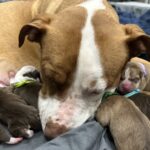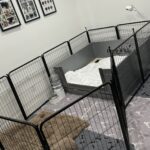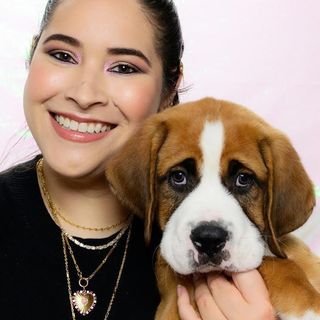You may have heard the term “socialization,” and many people think that socialization is puppies interacting with lots of people or being friendly with humans and dogs, but it is much deeper than that!
Socialization is really socialization AND familiarization, which means learning how to interact with others (animals and people) AND how to interact and react to and with objects, sights, and sounds.1
It’s better to think of socialization as exposing puppies to a variety of new people, experiences, objects, sounds, etc. during the Socialization Stage (3 to 12 weeks of age).
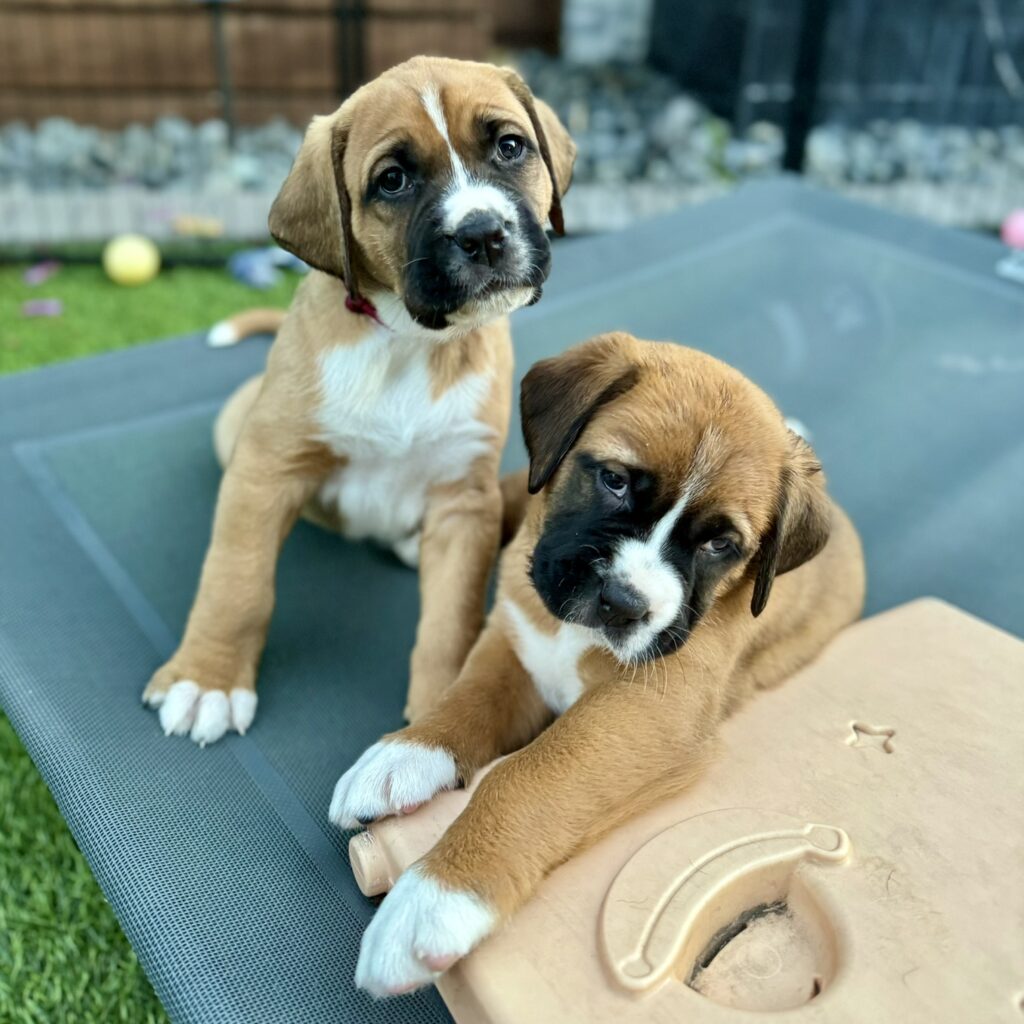
It is also important to focus on practical exposure: the types of objects, people, and experiences they are likely to encounter throughout their lives.
Familiarization with Objects
This is a an introductory list of commonly found or encountered objects that your puppy should be familiar with so that they do not develop fears towards them in the future.
- Bed
- Blow Dryer
- Cardboard Box
- Carpet
- Cars
- Collar
- Crate
- Dishwasher
- Doors
- Dryer
- Fences
- Furniture
- Gates
- Grass
- Leash
- Metal Bowls
- Shadows
- Sink or Tub
- TV
- Tile
- Toys
- Turf
- Washing Machine
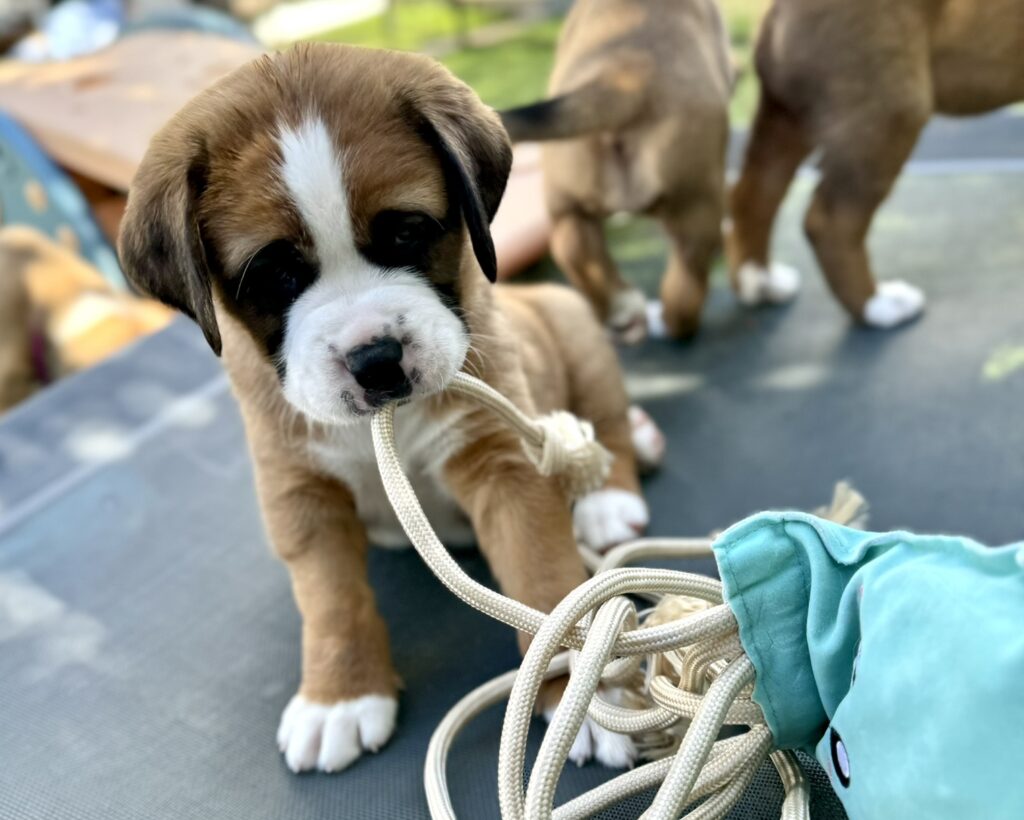
Socialization with People
The more people your pup is exposed to early on, the less likely they are to develop sensitivities to them in the future. As much as possible, a variety of people is key to helping your pup generalize that all humans are good humans (within the context of socialization, obviously!). Here are some attributes/characteristics to include:
- Accessories (hats, boots, etc.)
- Ages
- Ethnicities
- Genders
- Hairstyles
- Heights
- Shapes
- Sizes
- Voices
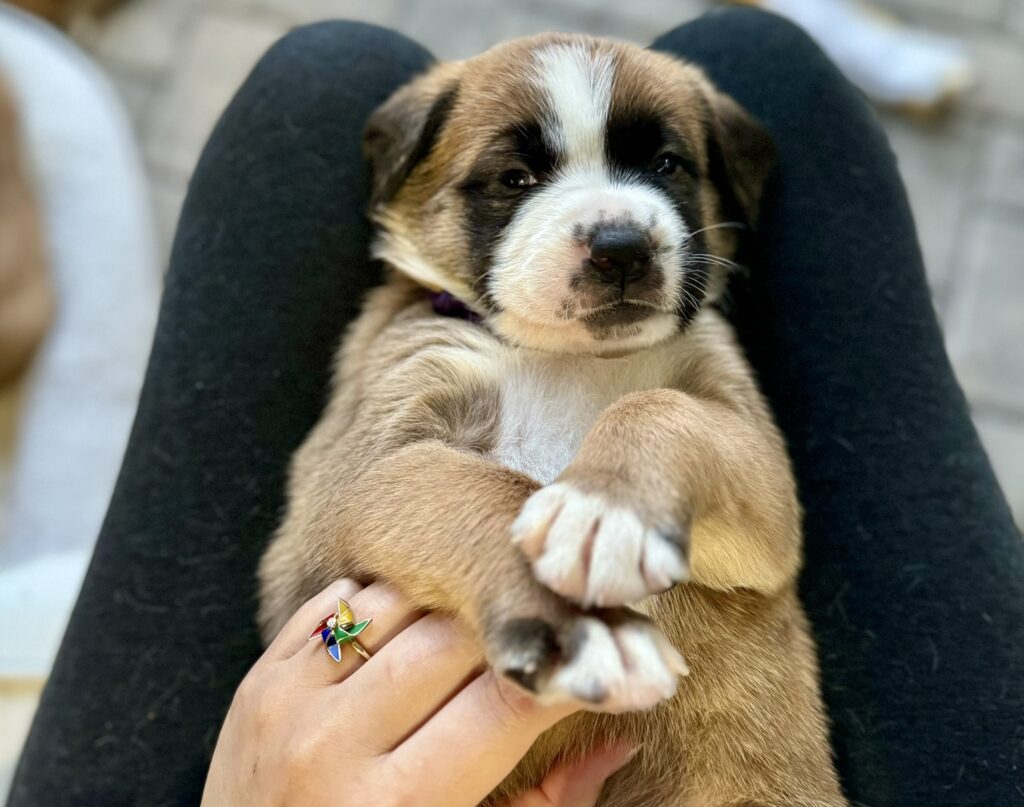
Experiences for Life
Experiences include a mix of stimuli, so they can often include novel objects and people. The most obvious and common would be handling that relates to health and hygiene, like bathing/grooming and handling that would be done by a veterinarian (checking ears, opening the mouth, taking temperature). Here is a list of experiences to introduce to your pup to get you started:
- Bathing
- Being held
- Being left alone
- Brushing
- Car rides
- Checking teeth
- Cleaning ears
- Crate training
- Cuddling
- Dogs/cats
- Going to new locations
- Going to the vet
- Grooming
- Nail trimming
- Noise (from music/TV to traffic, trucks, and clanging of metal)
We are teaching puppies about the world they will be living in, how to interact with what they may encounter, and setting expectations for appropriate behaviors as adults.
They often have their first experiences with their breeder or if rescued, with a foster parent. These early caretakers need to be able to ensure those initial experiences are positive, safe, and controlled to the extent that is possible. We must work with the individual puppy to provide the right level of intensity and work with them to overcome fear or help them become more confident in dealing with a particular experience.
By doing so, we can create a foundation for a confident and well-adjusted pup when they go to their forever home.2 It will take continued socialization as a pup goes through adolescence and into adulthood, along with maintenance during adulthood, to remain a well-adjusted and well-socialized member of the family.
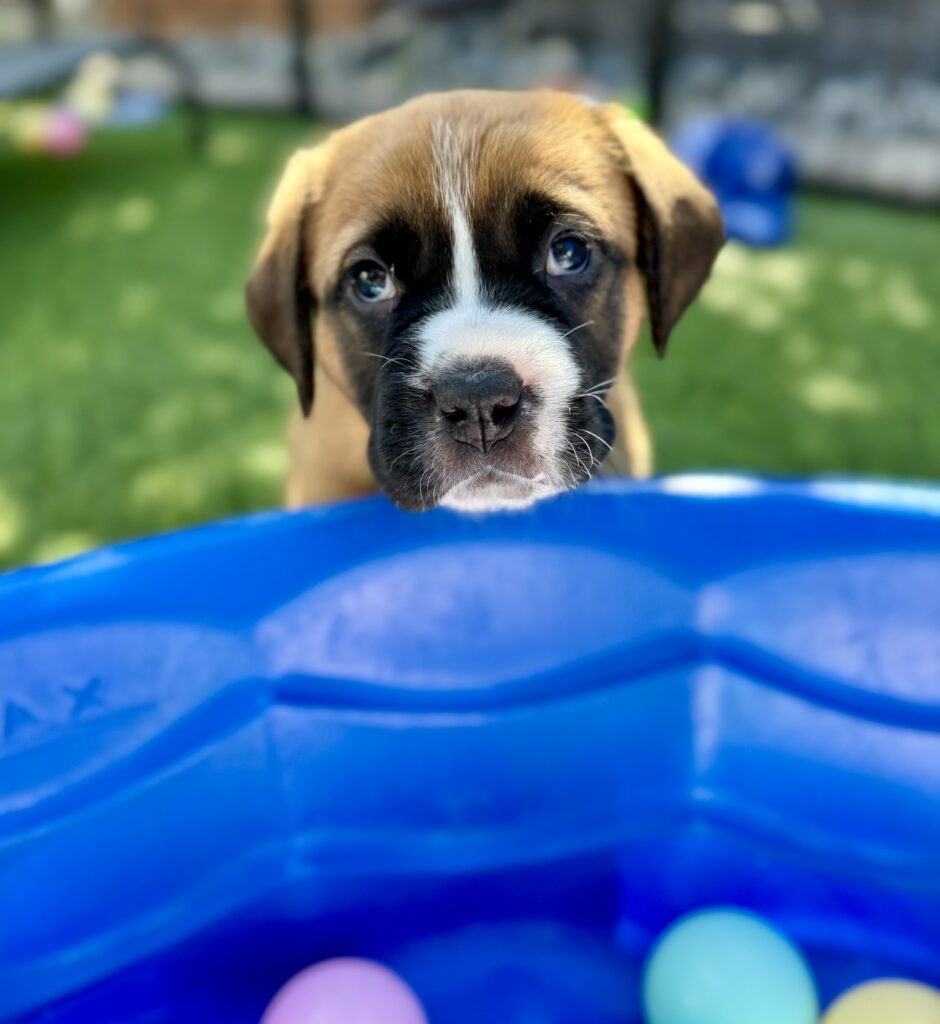
How to Create Positive Experiences
The key to effective socialization and familiarization is maximizing the most positive encounters possible and minimizing the possibility of negative encounters.3
For example, if a puppy’s first experience with a vacuum is having it pushed into their face rather than simply turned on and used 20 feet away, it is much more likely to have a negative experience because it’s more aggressive and intense of an introduction.
We don’t want that–we want the introduction to a potentially scary thing be more gradual and less intense. We want to give the pup the ability to back away from an experience and have a safe place to hide or retreat.
We cannot control everything, so puppies will likely have some negative experiences during their puppyhood. However, we can turn them into more positive, learning-based experiences by allowing the pup to hide, gently coaxing them out and rewarding them for it, and helping them learn that when scared, they can go to a human for safety.

If a pup is becoming distressed or showing signs of fear, it is often best to remove or minimize the stimulus and give the pup time to recover. We can recreate the experience at a lower intensity level and offer treats or petting while they experience it.
The process of socialization is a marathon, not a race, and every puppy is different. Some are naturally more inquisitive, while others are born fearful.
Footnotes
- Supplementary guidance for dog breeders on the socialisation … (n.d.). https://food.ec.europa.eu/system/files/2022-07/aw_platform_plat-conc_guide_socialisation_puppy.pdf ↩︎
- Freedman, D.G., Elliott, E., and King, J.A. (1961). Critical period in social development of dogs. Science, 133, 1016-1017. ↩︎
- Scott, J.P. and Fuller, J.L., (1965). Genetics and the social behavior of the dog. 1st ed. Chicago, IL: University of Chicago Press. ↩︎



